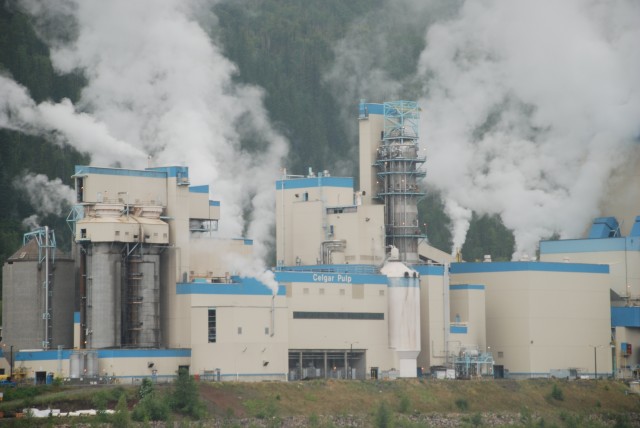Celgar to cut 85 jobs at Castlegar mill
Celgar managing director of operations Kevin Anderson told The Source today that 85 jobs will be cut from the mill over the next five years, most within the coming year.
He said no single portion of the mill or the staff base will be targeted, with the workforce reduction taking place mill-wide, across most departments.
“We just completed a very constructive meeting with the union,” he said, adding they’re hoping to meet with union reps again later in the week, explaining they’re looking to create early retirement options for senior employees (particularly ones covered by the collective agreement), allowing them to leave voluntarily.
“That’s very important to us, for that to happen as much as possible,” he said. “Although (this) is obviously very unfortunate for some employees, this is the right decision for the long-term viability of the mill.”
He said this move is in the best interest of remaining employees as well as the community, allowing the mill to remain competitive locally, nationally and globally, “and, hopefully, to paritcipate in the growing bio-economy opportunities”.
“A lot of our competitors are running safely and efficiently with far fewer employees than we have today.”
He also said the mill is currently in a stable position, but it is a cyclic industry, and reducing their workforce will help them deal with that cyclic quality over the long term.
The following is the Mercer press release issued this afternoon:
Mercer International Inc. (“Mercer” or the “Company”) (Nasdaq: MERC, TSX: MRI.U) announced today that, after conducting a comprehensive assessment, its Celgar mill intends to reduce its workforce in order to improve its competitiveness with other pulp producers. The planned reduction will affect both hourly and salaried employees. The workforce reduction is expected to involve approximately 85 employees over the next five years, with the majority of employees to be affected over the next 12 months.
This action is being taken to make a substantial reduction in fixed costs by bringing personnel levels more in line with other mills operating safely and productively around the world. “It is essential for the long term viability and sustainability of the Celgar mill that it maintains a competitive cost structure compared to other producers in the face of ever increasing costs and other challenges. A competitive cost structure is also essential to attract the necessary investment capital required to continue to modernize the mill and participate in growing bio-economy opportunities,” says Mercer’s President and Chief Executive Officer, Jimmy Lee.
The Celgar mill will continue to operate with an annual capacity of approximately 520,000 air-dried metric tons of market northern bleached softwood kraft pulp and plans to employ approximately 370 employees when the workforce reduction is completed at the end of 2017.
Celgar will take appropriate measures to assist employees affected by the workforce restructuring in accordance with applicable agreements, policies and legislation and offer early retirement incentives for senior employees.






















